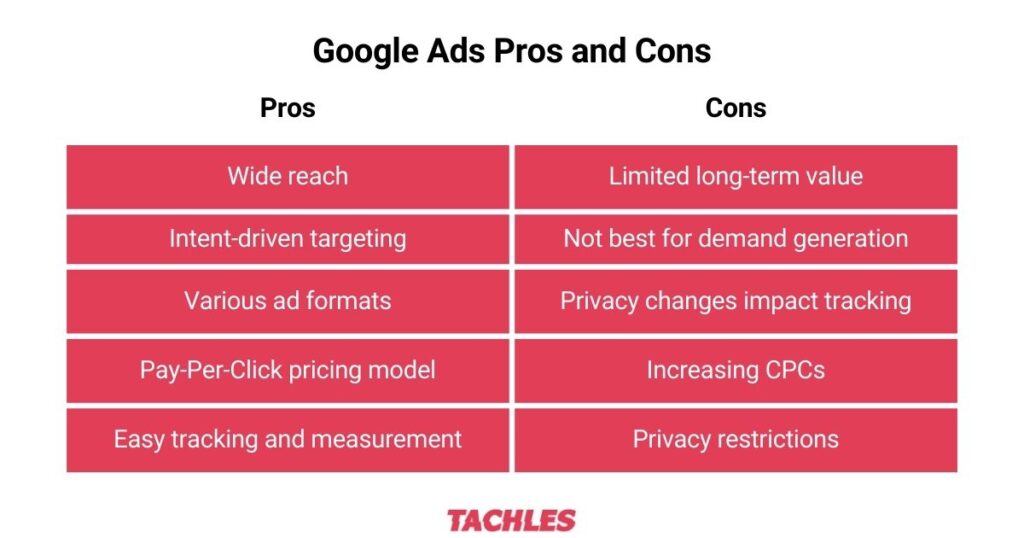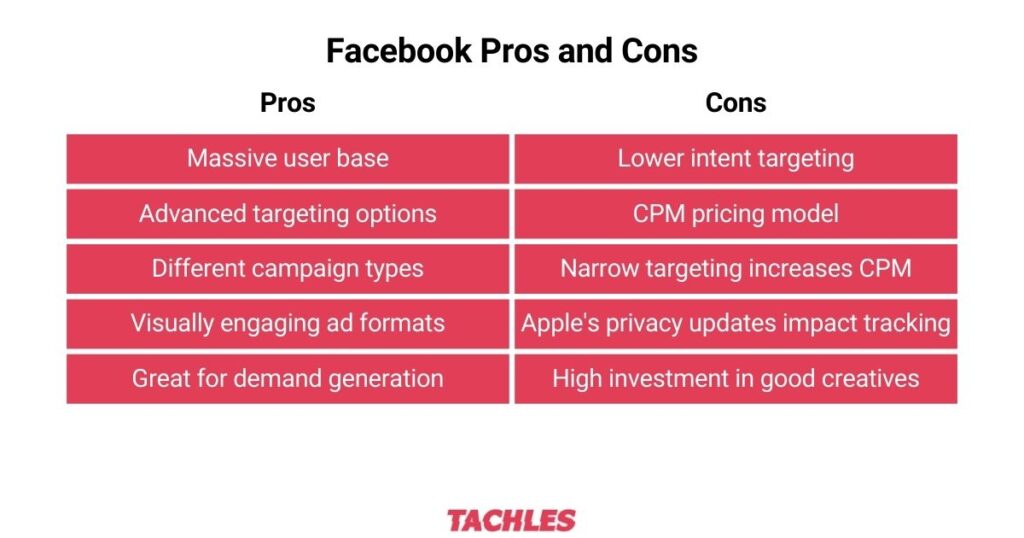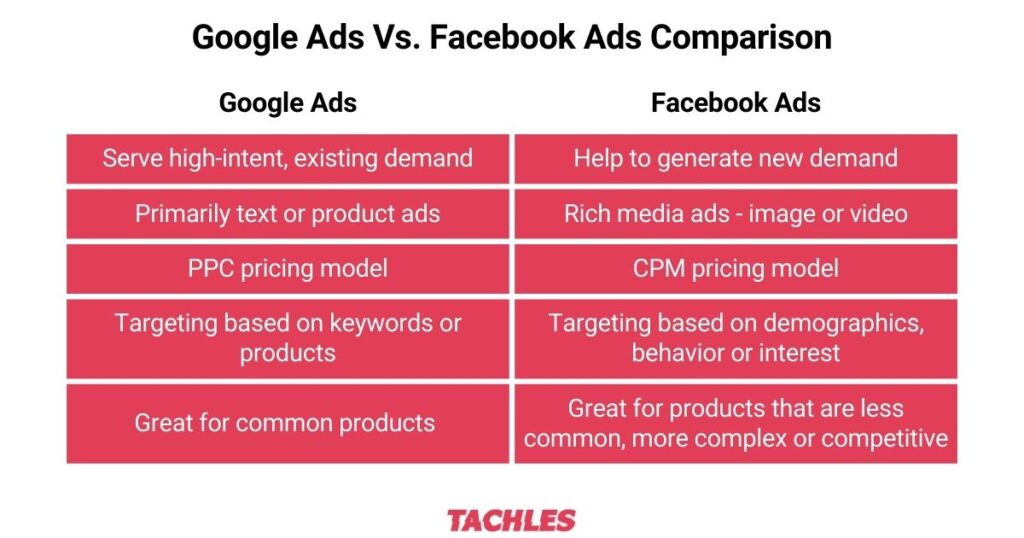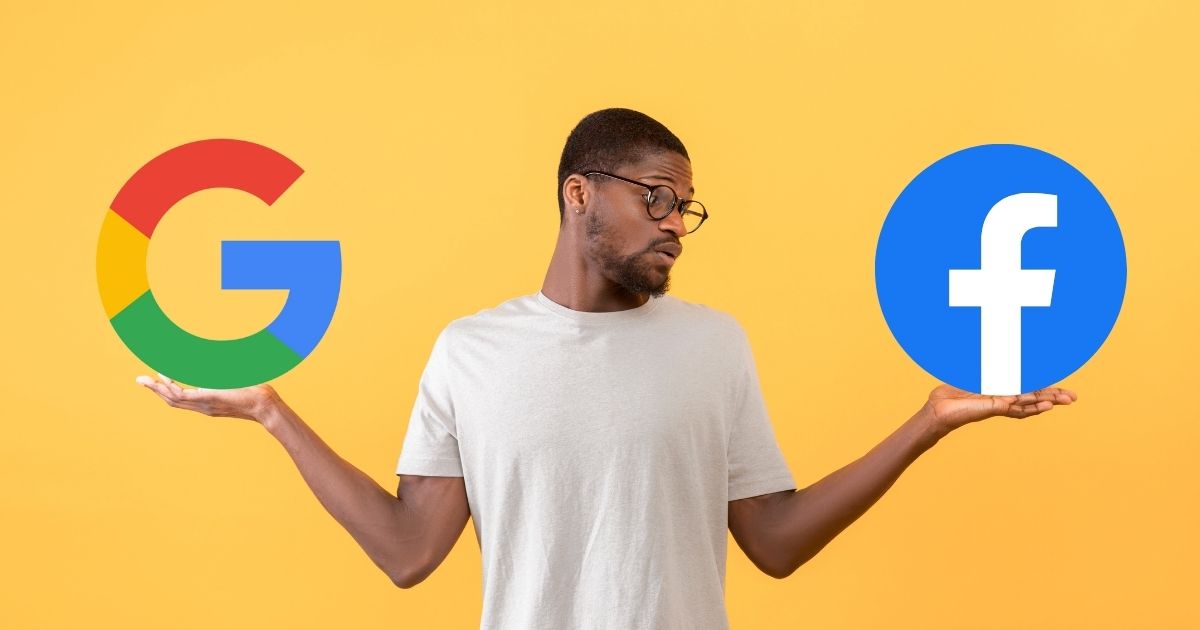When it comes to digital advertising, two of the biggest players in the game are Google Ads and Facebook Ads. Both platforms offer unique advantages for Ecommerce businesses and can be effective in reaching your target audience.
In this article, we will compare the benefits and disadvantages of each platform to help you make an informed decision for your advertising strategy.
What Are Google Ads?
As of May 2023, 93% of all search queries are done on Google. By comparison, its closest rival, Microsoft’s Bing, only has a market share of 2.77%. In 2022, every day 8.5 billion searches took place on Google.
Such huge numbers pose a huge opportunity for advertisers, and Google Ads is their tool to reach this audience both on the SERP (Search Engine Results Page), as well as ads on display banners, YouTube, Gmail, and Discover…
With all of these ad types and placements, Google Ads can target potential customers in all funnel stages. Paid search ads (search and shopping campaigns) are considered the strongest ‘pull channel’ for catching existing demand.
Advertisers set ads that are triggered by keywords that are relevant to their business. When a user types in one of these keywords in Google, the advertiser’s ads will participate in bidding – if they win, they’ll be shown to the user at the top of the SERP.
The process is similar to shopping ads, but there it’s based on product titles and attributes instead of keywords.
YouTube and Display campaigns can be great to increase brand awareness among prospects in the higher funnel stages, as well as for retargeting recent visitors to your website.
Pros And Cons of Google Ads
Now let’s go over some of the pros and cons of Google Ads for Ecommerce marketers.
Benefits of Google Ads
Here are some of the benefits of Google Ads:
- Wide reach: Google is the most popular search engine in the world, with billions of searches conducted daily. This means you have the potential to reach a large audience actively searching for products related to your business. Google’s ads can show on the SERP, Gmail, YouTube, Discover, and display banners across millions of websites and apps.
- Intent-driven targeting: With Google Ads, you can target users based on their search queries, allowing you to reach potential customers with high intent to make a purchase or take a specific action. This makes paid search ads great for serving existing demand.
- Various ad formats: Google Ads offers a range of ad formats, including text ads, shopping ads, display ads, video ads, app downloads, and Gmail ads. This versatility allows advertisers to choose the format that best suits their goals.
- Pay-per-click pricing: With Google Ads, you only pay when a user clicks on your ads, making it a cost-effective advertising option. You can set a budget that suits your business and adjust it as needed.
- Easy tracking and measurement: Google Ads provides comprehensive tracking and measurement tools, allowing you to analyze the performance of your campaigns and make data-driven optimizations.
Online businesses especially like using paid search ads – the ad formats that show on Google’s SERP. When set up right, these ads tend to perform well thanks to the high intent of the users clicking them.
Disadvantages of Google Ads
On the other hand, Google Ads also have some shortcomings:
- Increasing CPCs: As more businesses compete for ad space on Google, the cost per click (CPC) can increase over time, making it more expensive to run ads.
- Privacy restrictions: Privacy concerns and regulations make tracking and attribution more challenging on Google Ads, limiting the ability to gather detailed user data.
- Limited long-term value: Once you stop running Google Ads campaigns, the traffic to your website will decrease. It requires ongoing investment to maintain consistent traffic levels.
- Not best for demand generation: Google Ads aren’t considered as good as Facebook Ads when it comes to generating brand awareness and new demand.
- Google Ads can’t show on social media: Social media plays a central role in our daily online activities, but Google advertisers can’t reach users on platforms such as Facebook, Instagram, Tiktok or LinkedIn.

What Are Facebook Ads?
Facebook Ads are media-based ads (image or video) that digital marketers run on Facebook and Instagram. Setting up ads for both platforms is done via the Facebook Ads Manager.
With more than 2.5 billion monthly active users on Facebook and Instagram, each spending an average of 2.5 hours a day on the platforms, Facebook Ads are essential for advertisers who’d like to reach this giant audience. And who doesn’t?
Facebook Ads are considered a great ‘push channel’ to generate new demand. They are commonly used to reach potential customers who are in the middle stages of the marketing funnel.
These users haven’t necessarily started looking for your product, but marketers believe there’s a good chance some of them will be interested when they see an ad.
Advertisers who run Facebook Ads can target users according to age, gender, behavior, or interests.
Pros And Cons of Facebook Ads
Below are some of the pros and cons of Facebook Ads.
Benefits of Facebook Ads
Facebook Ads have many benefits, including:
- Massive user base: In Q2 2023, Facebook had over 3 billion monthly active users, and Instagram is expected to hit 2.5 billion MAU by the end of 2023. This means marketers who advertise on Facebook Ads get access to immense reach.
- Advanced targeting options: Facebook Ads provides granular targeting options, allowing you to narrow down your audience based on various factors, such as age, gender, interests, and online behaviors.
- Different campaign types: digital marketers can use different campaign types to serve different objectives, such as brand awareness, lead generation, engagement, or sales.
- Visually engaging ad formats: Facebook Ads supports visually appealing ad formats, including images, videos, carousels, and slideshows. These formats can capture users’ attention and drive engagement. It’s also a great way for brands to distinguish themselves from the competition and convey their brand personality to potential customers.
- Great for demand generation: Ad campaigns on Facebook and Instagram have played a huge role in the success of many emerging brands. They are especially important for brands that act in a competitive market (e.g. fashion) or offer unique products.
- Social proof: When potential customers see high engagement numbers on paid social ads, such as likes and followers, it increases the chance that they’ll click and convert.
Disadvantages of Facebook Ads
Disadvantages of Facebook Ads include:
- Lower intent targeting: Unlike Google Ads, Facebook Ads primarily target users based on their interests and behaviors, rather than their search intent. This can result in lower conversion rates compared to Google Ads.
- Limited search intent: While Facebook Ads can target users based on their interests and behaviors, they may not be as effective for targeting users actively searching for specific products.
- CPM (Cost-Per-Mille) pricing models: Facebook advertisers pay by impressions. CPM is a metric that measures how expensive it is to show 1000 impressions of an ad. This means advertisers pay even when users are completely indifferent to their ads.
- Narrow targeting increases CPM: Facebook Ads have amazing targeting options, but the more advertisers narrow down to target a smaller audience, the higher the CPM will be. This is ok if the audience converts well, but limits the reach of the ads.
- Apple’s iOS 14 update: In 2021, Apple made privacy changes in its devices that make it harder for advertisers to track activity on all apps, including Facebook and Instagram. This has caused significant drops in performance for many advertisers, especially in remarketing campaigns.
- High investment in good creatives to perform: In order for Facebook campaigns to perform well, advertisers need to invest in strong creatives that will cut through the noise. This requires investment, talent, and experience.

Facebook Ads or Google Ads – Which Is Better for My Business?
Most businesses run ads on both Google Ads and Facebook Ads. What changes is the budget mix between the two channels.
Each platform has its strengths and weaknesses and can do things that the other platform can’t.
Some factors that affect the decisions on which platform to focus include:
- Business stage: When a business is new, it needs to build brand awareness to win its first customers. Brands with low brand awareness will struggle more in the competition against bigger players on Google’s SERP. YouTube and Display ads are also great to reach potential customers in the higher funnel stages but usually don’t perform too well in terms of ROAS (Return On Ad Spend).
- Competitive landscape: Even established brands need ongoing investment in maintaining their market share and acquiring new customers. Paid social ads help brands communicate their unique brand personality to stand out from the competition with images and videos. Brands that are known will probably also run ads on Google.
- Type of product: Let’s say you sell a unique product that people don’t often search for, e.g. a hair accessory to add volume to women’s hair. As there’s no common name for your product, the potential search volume for it on Google will be relatively low. In such cases, most of the budget should be allocated to Facebook Ads. The same goes for when you have a product that needs some extra explanation.
- Where your customers spend time: Social media is great for targeting a younger audience, as it spends more time on it. Brands that target people ages 20-30 should definitely focus on paid social. Brands that sell products that are less age-specific can also perform well on Google.
- Performance: How do your ads perform on each platform? Where do you get the better ROAS? Where can you scale more? The answers to these questions will have an impact on your budget allocation.
One can also look at it this way: Google Ads (search and shopping) are great to target customers who are in the lower funnel stages of their customer journey. They are actively looking to buy something, and if you happen to have it, chances are good they’ll convert with a good ROAS.
Facebook Ads help advertisers reach users who aren’t actively looking for their product at that very moment. The time it takes them to convert might be longer in comparison to Google, but the reach might be significantly bigger. These ads depend heavily on their creatives, which is great for super stylish, unique, or complex products.

Conclusion
Both Google Ads and Facebook Ads play an important role in many Ecommerce brands’ marketing strategy. Each marketing channel has its advantages and disadvantages and should be used to meet different business goals, according to the unique characteristics of the business.
Whereas Google Ads is considered a ‘pull channel’ to serve existing demand, Facebook Ads is considered a ‘push channel’ to increase brand awareness, generate new demand, and scale sales.
Most brands use both advertising platforms, and split the budget between them, according to their business stage, competitive landscape, type of product, where their target audience spends time, and each channel’s actual performance.
Further Reading:
- PPC vs. SEO: Which One Is Better? Pros, Cons, And When To Use Which
- Google Dynamic Search Ads: A Great Way to Boost Your Online Sales
- How To Use Facebook Ads To Get Instagram Followers
- How Long Does It Take For Facebook Ads To Optimize?
- Facebook Ad Testing: A/B Test To Improve Your Results
FAQs:
Which Is Better – Google Ads Or Facebook Ads?
Both platforms can yield great results. Google is better to service existing demand, whereas Facebook is better for building brand awareness, generating demand, and scaling sales.
Which Is Cheaper – Google Ads Or Facebook Ads?
It’s difficult to answer this question, and one has to decide on which KPI to focus – CPC (Cost Per Click), CPO (Cost Per Order), or CAC (Cost Per Acquisition of new customers).
Either way, the answer really depends on the product, target audience, ad quality, website quality, seasonality, and many other factors.
Each business should define its key KPI and test ads on Google and Facebook to decide which advertising platform is more profitable for it.
What’s The Difference Between Google Ads and Facebook Ads?
Google Ads serves different ad formats across Google’s assets – the SERP, YouTube, Gmail, Discover, Shopping – as well as on display banners on millions of websites and apps.
This platform is especially great to serve ads to potential customers in the lower funnel stages, MOFU and BOFU. The most common payment model is PPC (Pay Per Click).
Facebook Ads allows advertisers to serve ads to the massive user base of Facebook and Instagram on those platforms.
The platform is great to target potential customers who aren’t searching for a specific product at the moment, but that the marketer and Facebook’s algorithm believe might be interested. The common payment model is CPM (Cost Per Mille), per impression.
Facebook Ads play an essential role in the scaling efforts of many brands.
Google Ads Or Facebook Ads – Which Is Easier To Use?
Each platform stresses another aspect. On Google ads (search and shopping) the focus is on targeting users with relevant keywords which are allocated into ad groups and campaigns. Marketers then turn on relevant text or product ads and optimize according to performance.
Google Ads accounts often have multiple campaigns running simultaneously, independently from one another.
On Facebook Ads, there’s stronger stress on A/B testing different creatives. Most of the effort goes into planning the A/B tests and producing the creatives. Once a winning creative is found for a specific audience, the account manager can increase the budget for that ad, or test it on a new audience.
From my experience, Google Ads is more technical, with more moving parts to consider. On Facebook, the challenge is in the successful scaling with A/B tests.

